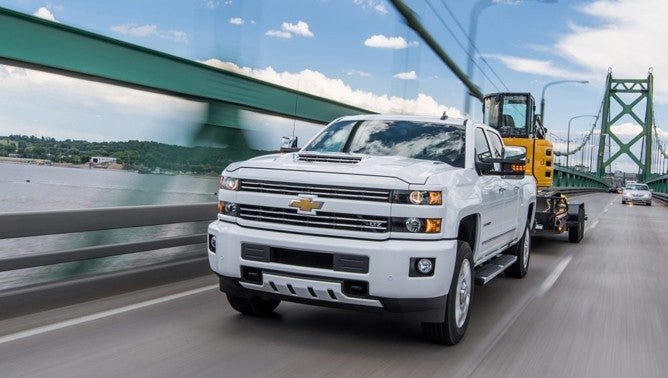Every diesel truck owner wants an engine brake on their rig. That is if they don’t already have one. They help slow your pickup without cooking the brakes. But how do they work? And why don’t pickup brakes make that horrible brapping noise that the ones on a big rig do?
Lift off the gas in a gas-engine vehicle, and it will start to slow down. Not just the amount you’d expect from air resistance and friction, but even more than that. Drop a gear or two (or eight in some modern transmissions) and as revs climb so does the braking force. If you’re driving a manual transmission, that slowing down is exaggerated even further. To near electric-car regen levels.
It’s called engine braking. When you have your foot on the gas, air is sucked in, combined with fuel, and it makes power. That power moves you. Turn off the fuel and reduce the air and things change.
In a gasoline engine, that engine braking is caused by the throttle plate in the intake. When it’s closed, very little air can get through. The pistons keep spinning, though, turned by the drive wheels. As long as you’re rolling, that is. That means they are still trying to suck in air. The less air can pass through the intake, the more vacuum the cylinder’s pull creates.
ALSO SEE: The Best Winches and Why You Need One
It’s like sucking air through a straw. Block the straw and you have to suck harder. That suck slows down the vehicle. Shift to a lower gear and you slow your car even faster. Because it’s spinning faster and sucking more times per minute.

But a diesel doesn’t have a throttle butterfly. Diesel intakes are open all the time. Power in a diesel is controlled by how much fuel is injected, not how much air is allowed in. So if you let off the accelerator, they’ll just roll until friction, gravity, and wind resistance stop them. Which on a long downhill can be never.
Since diesel trucks are likely to haul big loads, it’s good to have something to slow them down. Something that isn’t conventional brakes, that, no matter how good they are, will eventually overheat if used continuously.
Enter the exhaust brake.
An exhaust brake adds a way to use that engine compression to slow down a diesel engine. And no, an exhaust brake isn’t that big diesel all-noise brake that you’ve heard anytime a big rig slows down. That’s a compression brake. It’s different.
The exhaust brake works basically by adding a restriction into the exhaust that can open and close. If it’s an aftermarket unit, it’s probably just a throttle plate put in the exhaust stream. Instead of straining to pull air in like a gas engine, the diesel with a closed exhaust brake is straining to push the air out. This builds up pressure in the exhaust, which the brake has to release before it builds too high. Like your thumb over a garden hose, the water eventually shoots out. Which is why some aftermarket pickup brakes make a quieter version of the big truck brap brap.

With the Duramax diesels, GM has found a way to add exhaust braking without adding any extra parts. Or at least not many.
ALSO SEE: 2019 Ram 1500 eTorque Review
It takes advantage of the variable geometry turbocharger. That system uses moving blades to direct air toward or away from the turbocharger blades. It’s normally used to change boost pressure at various engine speeds, adding more boost at lower engine speeds. But it can also be used to brake the truck.
The vanes turn so that they are actually blocking the exhaust flow. That builds that pressure in the exhaust manifold. The pressure slows the truck on grades. And because the turbo vanes can change the amount of pressure, they can control how much braking occurs. It’s not an on/off switch.

Put the truck in Tow/Haul, and the system gets more aggressive. Engaging harder and faster. Even the cruise control mechanism can get in on the action. Slowing the truck slightly on downhill grades without using the service brakes. Tap the switch, marked with a strange icon that looks like it’s passing wind, and the exhaust brake is enabled. It works so well that GM has added it to the smaller 2.8L diesel in the Colorado and Canyon pickups to help those trucks manage heavy loads too.
So that’s how diesel exhaust brakes brake your diesel.
From GMInsideNews.com
